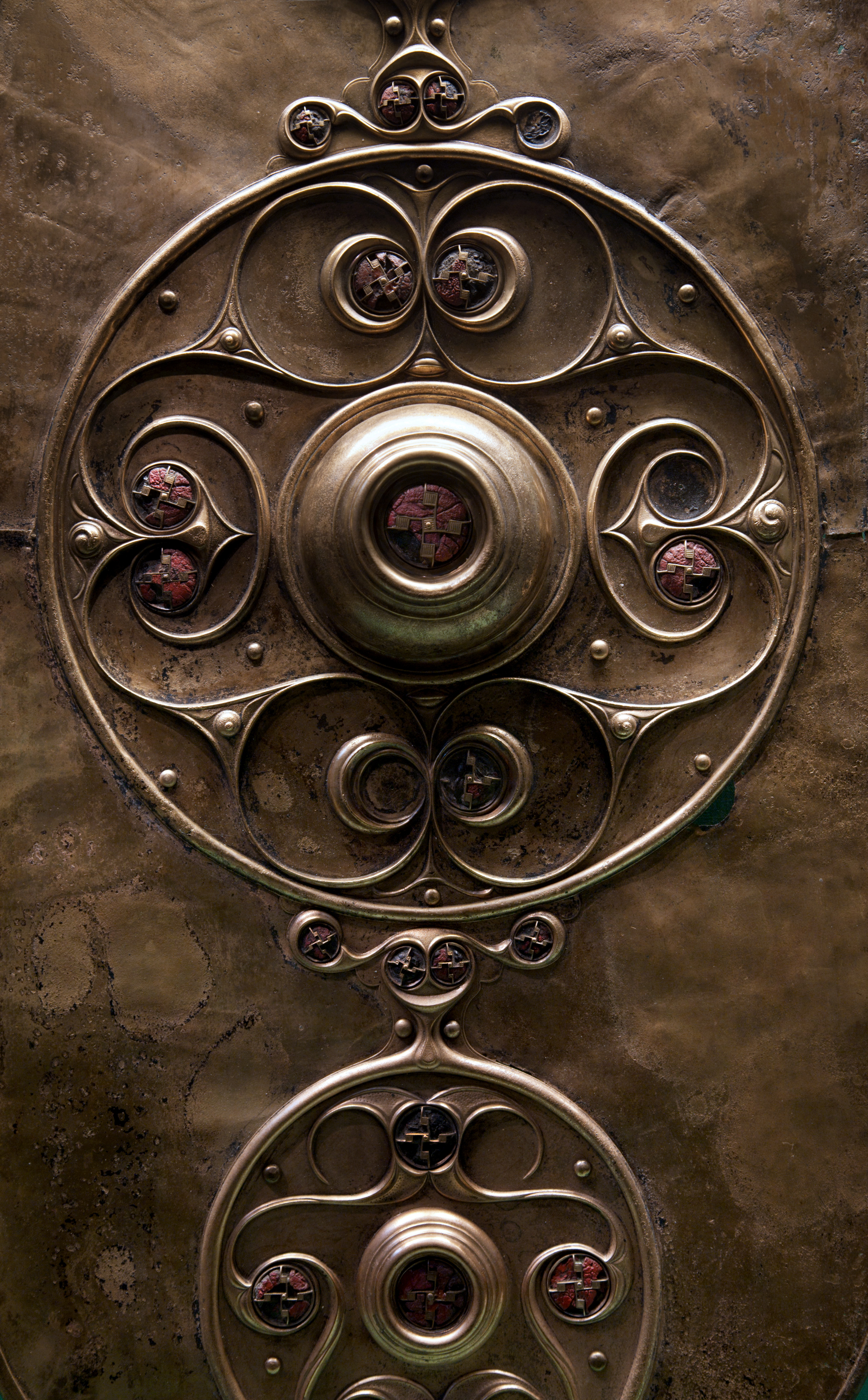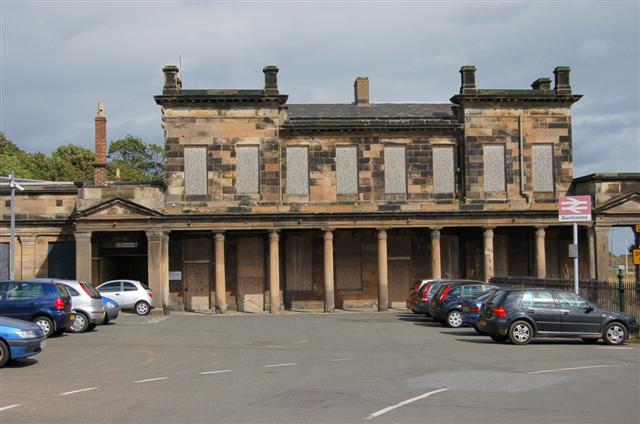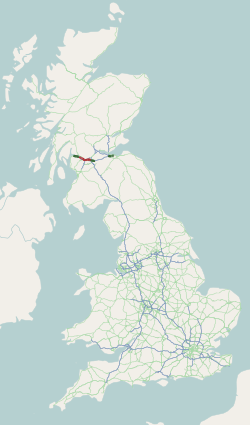|
Gogar, Edinburgh
Gogar is a predominantly rural area of Edinburgh, Scotland, located to the west of the city. It is not far from Gogarloch, Edinburgh Park and Maybury. The Fife Circle Line is to the north. Etymology The name of Gogar first appears in a clearly datable context in 1233. The etymology is uncertain. It may be derived from "cog" or "gowk", a Scots term for cuckoo, a bird with known ritual significance in ancient times, or from the Brythonic term for red, "coch" (cf "''Red'' Heughs" in the vicinity). The name also appears as a compound in several places in the area, notably Gogarloch named after the drained Gogar Loch; Gogarburn, Gogarbank, Gogarstone and Castle Gogar. Prehistory and archaeology In 2008, in advance of the construction of the Edinburgh tram line archaeological work was undertaken by GUARD Archaeology to the west of Gogar Mains. The archaeologists discovered a range of features and structures that date from the Neolithic to the Early Middle Ages. The Neolithic fi ... [...More Info...] [...Related Items...] OR: [Wikipedia] [Google] [Baidu] |
City Of Edinburgh
The City of Edinburgh Council is the local government authority for the city of Edinburgh, capital of Scotland. With a population of in mid-2019, it is the second most populous local authority area in Scotland. In its current form, the council was created in 1996 under the Local Government etc. (Scotland) Act 1994, to replace the City of Edinburgh District Council of the Lothian region, which had, itself, been created in 1975. The history of local government in Edinburgh, however, stretches back much further. Around 1130, David I made the town a royal burgh and a burgh council, based at the Old Tolbooth is recorded continuously from the 14th century. The council is currently based in Edinburgh City Chambers with a main office nearby at Waverley Court. History Before 1368 the city was run from a pretorium (a Latin term for Tolbooth), and later from around 1400 from the Old Tolbooth next to St Giles' Cathedral. A Tolbooth is the main municipal building of a Scottish bur ... [...More Info...] [...Related Items...] OR: [Wikipedia] [Google] [Baidu] |
Iron Age Britain
The British Iron Age is a conventional name used in the archaeology of Great Britain, referring to the prehistoric and protohistoric phases of the Iron Age culture of the main island and the smaller islands, typically excluding prehistoric Ireland, which had an independent Iron Age culture of its own. The parallel phase of Irish archaeology is termed the Irish Iron Age. The Iron Age is not an archaeological horizon of common artefacts but is rather a locally-diverse cultural phase. The British Iron Age followed the British Bronze Age and lasted in theory from the first significant use of iron for tools and weapons in Britain to the Romanisation of the southern half of the island. The Romanised culture is termed Roman Britain and is considered to supplant the British Iron Age. The tribes living in Britain during this time are often popularly considered to be part of a broadly- Celtic culture, but in recent years, that has been disputed. At a minimum, "Celtic" is a linguistic ... [...More Info...] [...Related Items...] OR: [Wikipedia] [Google] [Baidu] |
Maitland Baronets
There have been three baronetcies created for persons with the surname Maitland, two in the Baronetage of Nova Scotia and one in the Baronetage of the United Kingdom. Two of the creations are extant as of 2008 while the other is either dormant or extinct. The Maitland Baronetcy, of Pitrichies in the County of Aberdeen, was created in the Baronetage of Nova Scotia on 12 March 1672 for Richard Maitland. The title became either extinct or dormant on the death of the fourth Baronet in circa 1704. The Maitland Baronetcy, of Ravelrig, was created in the Baronetage of Nova Scotia on 18 November 1680 for the Hon. John Maitland, second son of Charles Maitland, 3rd Earl of Lauderdale. In 1695 he succeeded his elder brother as fifth Earl of Lauderdale. See this title for further history of the baronetcy. The Maitland, later Gibson-Maitland, later Ramsay-Gibson-Maitland, later Maitland Baronetcy, of Clifton in the County of Midlothian, was created in the Baronetage of the United Kingdom o ... [...More Info...] [...Related Items...] OR: [Wikipedia] [Google] [Baidu] |
Scottish Baronial Style
Scottish baronial or Scots baronial is an architectural style of 19th century Gothic Revival which revived the forms and ornaments of historical architecture of Scotland in the Late Middle Ages and the Early Modern Period. Reminiscent of Scottish castles, buildings in the Scots baronial style are characterised by elaborate rooflines embellished with conical roofs, tourelles, and battlements with Machicolations, often with an asymmetric plan. Popular during the fashion for Romanticism and the Picturesque, Scots baronial architecture was equivalent to the Jacobethan Revival of 19th-century England, and likewise revived the Late Gothic appearance of the fortified domestic architecture of the elites in the Late Middle Ages and the architecture of the Jacobean era. Among architects of the Scots baronial style in the Victorian era were William Burn and David Bryce. Romanticism in Scotland coincided with a Scottish national identity during the 19th century, and some of the ... [...More Info...] [...Related Items...] OR: [Wikipedia] [Google] [Baidu] |
Castle Gogar - Geograph
A castle is a type of fortified structure built during the Middle Ages In the history of Europe, the Middle Ages or medieval period lasted approximately from the late 5th to the late 15th centuries, similar to the post-classical period of global history. It began with the fall of the Western Roman Empire ... predominantly by the nobility or royalty and by Military order (monastic society), military orders. Scholars debate the scope of the word ''castle'', but usually consider it to be the private fortified house, fortified residence of a lord or noble. This is distinct from a palace, which is not fortified; from a fortress, which was not always a residence for royalty or nobility; from a ''pleasance'' which was a walled-in residence for nobility, but not adequately fortified; and from a fortified settlement, which was a public defence – though there are many similarities among these types of construction. Use of the term has varied over time and has also been ... [...More Info...] [...Related Items...] OR: [Wikipedia] [Google] [Baidu] |
Thomas Grainger
Thomas Grainger FRSE (12 November 1794 – 25 July 1852) was a Scottish civil engineer and surveyor. He was joint partner with John Miller in the prominent engineering firm of Grainger & Miller. Life Grainger was born at Gogar Green near Ratho, outside Edinburgh to Helen Marshall and Hugh Grainger. Educated at the University of Edinburgh, at 16 he got a job with John Leslie, a land surveyor. He started his own practice in 1816, and in 1825 he formed a partnership with John Miller which lasted until 1847. Their firm operated from the ground floor of Grainger's house at 56 George Street, in the centre of Edinburgh's New Town. Between 1845 and 1849 his company worked on the digging of the Bramhope Tunnel and building the Arthington Viaduct as part of laying the Leeds to Stockton-on-Tees line. The first modern rail ferry, the ''Leviathan'', was designed in 1849 by Grainger for the Edinburgh, Perth and Dundee Railway to cross the Firth of Forth between Granton and Burntis ... [...More Info...] [...Related Items...] OR: [Wikipedia] [Google] [Baidu] |
James Pittendrigh Macgillivray
James Pittendrigh MacGillivray (1856 – 29 April 1938) was a Scottish sculptor. He was also a keen artist, musician and poet. He was born in Inverurie, Aberdeenshire, the son of a sculptor, and studied under William Brodie and John Mossman. His works include public statues of Robert Burns in Irvine, Lord Byron in Aberdeen, the 3rd Marquess of Bute in Cardiff, John Knox in Edinburgh's St Giles Cathedral, and William Ewart Gladstone in Coates Crescent Gardens, Edinburgh. After training under Brodie in Edinburgh, Macgillivray worked for nine years in Glasgow as assistant to Mossman and James Steel. In 1894 he returned to Edinburgh, where he lived at "Ravelston Elms" on Murrayfield Road. Macgillivray was a Scottish nationalist, and associated both with Patrick Geddes' Fin de Siècle Scottish cultural revival and Hugh MacDiarmid's later Scottish Renaissance movement. He contributed illustrations to the Spring and Autumn volumes of ''The Evergreen: A Northern Seasonal'' publi ... [...More Info...] [...Related Items...] OR: [Wikipedia] [Google] [Baidu] |
Scottish Agricultural Science Agency
SASA (formerly the Scottish Agricultural Science Agency) is a division of the Scottish Government Agriculture and Rural Delivery Directorate. It provides scientific advice and support on a range of agricultural and environmental topics to the Scottish Government. SASA is based at Roddinglaw on the Western edge of the City of Edinburgh, where its premises contain a laboratory, a glasshouse and an experimental farm facility. Over 100 scientists and other staff members work at SASA, all of whom are civil servants. History From 1925 to 2006 the Agency and its precursors were based at East Craigs in Edinburgh. The Agency was first formed by the then Board of Agriculture for Scotland. The origins of SASA can be traced back to the opening of a full-time seed testing station in 1914 at 21 Duke Street, Edinburgh. Following the introduction of the Testing of Seeds Order 1917, the unit moved to larger premises at 7 Albany Street in 1918. In May 1925 the Seed Testing Station moved to new ... [...More Info...] [...Related Items...] OR: [Wikipedia] [Google] [Baidu] |
A8 Road (Great Britain)
The A8 is a major road in Scotland, connecting Edinburgh to Greenock via Glasgow. Its importance diminished following the construction of the M8 motorway which also covers the route between Edinburgh and Glasgow. Route and relationship to M8 Edinburgh The A8 begins at the West End of Edinburgh, in the New Town. The road originally also included Princes Street, but this stretch was declassified, as Princes Street is no longer open to all traffic. The road continues westwards into the suburbs of the city passing Murrayfield and Corstorphine, often with an accompanying bus lane. Only once the road reaches the A720 City Bypass does it become a primary route, leading out past the Royal Highland Showground at Ingliston, and Edinburgh Airport. At Newbridge, the A8 meets the start of the M8 and M9 motorways. From here the A8 is interrupted; it has been renumbered A89 until Bathgate, A7066 to Whitburn and then B7066 Harthill, until it resumes at Newhouse. Glasgow From Newh ... [...More Info...] [...Related Items...] OR: [Wikipedia] [Google] [Baidu] |
Royal Bank Of Scotland
The Royal Bank of Scotland plc (RBS; gd, Banca Rìoghail na h-Alba) is a major retail banking, retail and commercial bank in Scotland. It is one of the retail banking subsidiaries of NatWest Group, together with NatWest (in England and Wales) and Ulster Bank. The Royal Bank of Scotland has around 700 branches, mainly in Scotland, though there are branches in many larger towns and cities throughout England and Wales. The bank is completely separate from the fellow Edinburgh-based bank, the Bank of Scotland, which pre-dates the Royal Bank by 32 years. The Royal Bank of Scotland was established in 1724 to provide a bank with strong House of Hanover, Hanoverian and Whig (British political faction), Whig ties. Following ring-fencing of the Group's core domestic business, the bank became a direct subsidiary of NatWest Holdings in 2019. NatWest Markets comprises the Group's investment banking arm. To give it legal form, the former RBS entity was renamed NatWest Markets in 2018; at th ... [...More Info...] [...Related Items...] OR: [Wikipedia] [Google] [Baidu] |
Robert Liston (diplomat)
Sir Robert Liston, GCB FRSE PC (8 October 1742 – 15 July 1836) was a Scottish diplomat and ambassador to several countries. Biography Liston was born at Overtoun House in Kirkliston, Scotland, the son of Patrick Liston of Torbanehill, West Lothian. He studied languages at the University of Edinburgh, and then tutored the sons of the Earl of Minto. He was elected a Fellow of the Royal Society of Edinburgh in 1784. His proposers were Andrew Dalzell, William Robertson, and John Drysdale. He was granted an honorary doctorate (LLD) in 1785. Said to be able to speak ten languages, Liston joined the diplomatic service and enjoyed a career spanning Europe appointed on 22 September 1793, eventually arriving at Constantinople on 19 May 1794. He hated it there and left on 4 November 1795. In a promotion he was posted to the United States. In 1796 he married the heiress Henrietta Marchant of Antigua. Henrietta's charm and social tact were a great asset to her husband; she ... [...More Info...] [...Related Items...] OR: [Wikipedia] [Google] [Baidu] |
David Leslie, Lord Newark
David Leslie, 1st Lord Newark (c. 1600–1682) was a Scottish cavalry officer. He fought for the Swedish army of Gustavus Adolphus during the Scotland and the Thirty Years' War, Thirty Years' War. He had entered Swedish service in 1630, serving as a captain in the regiment of Alexander Leslie (future Earl of Leven). He returned to Scotland just before the end of the Bishops' War, and participated in the English Civil War and Scottish Civil Wars. Early life David Leslie was the fifth son of Sir Patrick Leslie, 1st Lord Lindores, and Jean, daughter of Robert Stewart, 1st Earl of Orkney. Thirty Years War David Leslie was one of the Scots who transferred from Swedish to Russian service under Alexander Leslie of Auchintoul (not to be confused with Leven) in 1632 to participate in the Smolensk War and was mentioned by name in Leslie of Auchintoul's testimonial. David Leslie re-appeared in the Swedish army in 1634 where he served as a colonel and thereafter Field Marshal Johan Ba ... [...More Info...] [...Related Items...] OR: [Wikipedia] [Google] [Baidu] |









